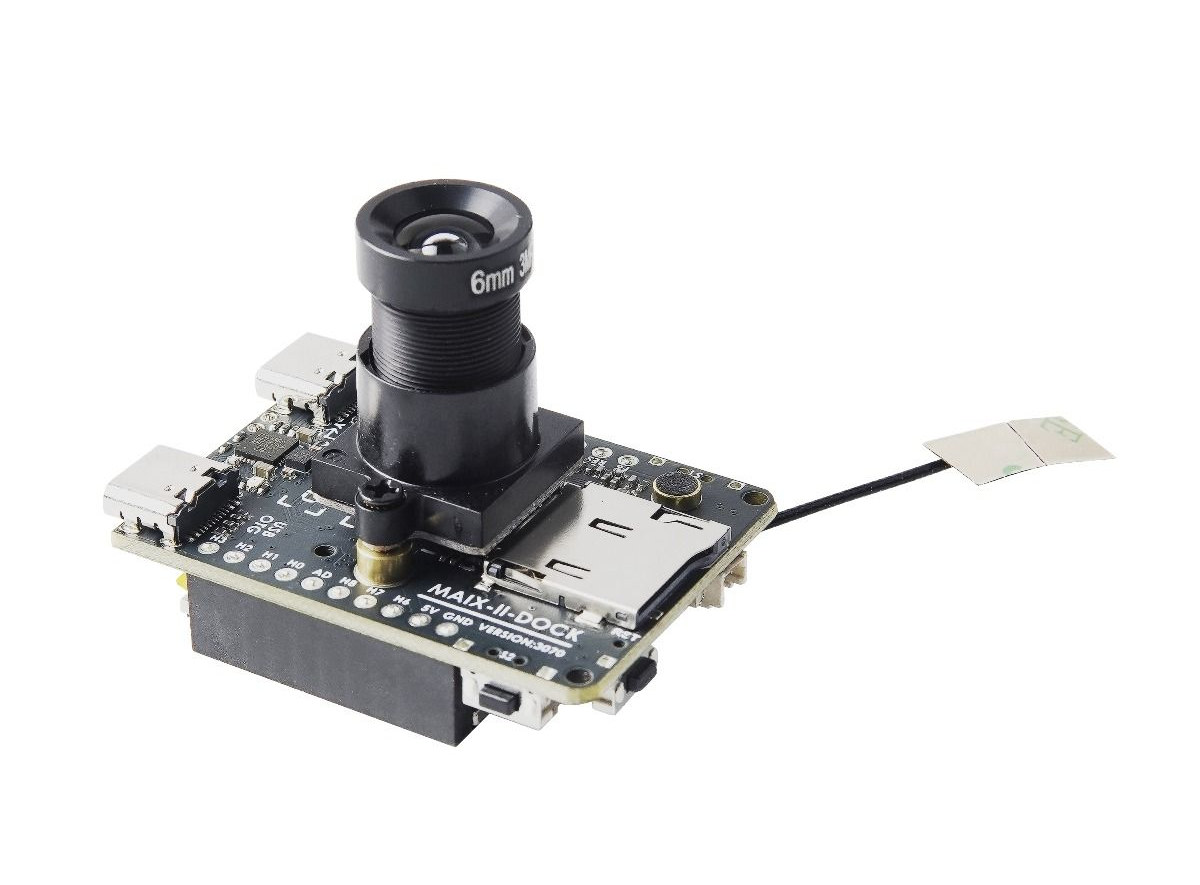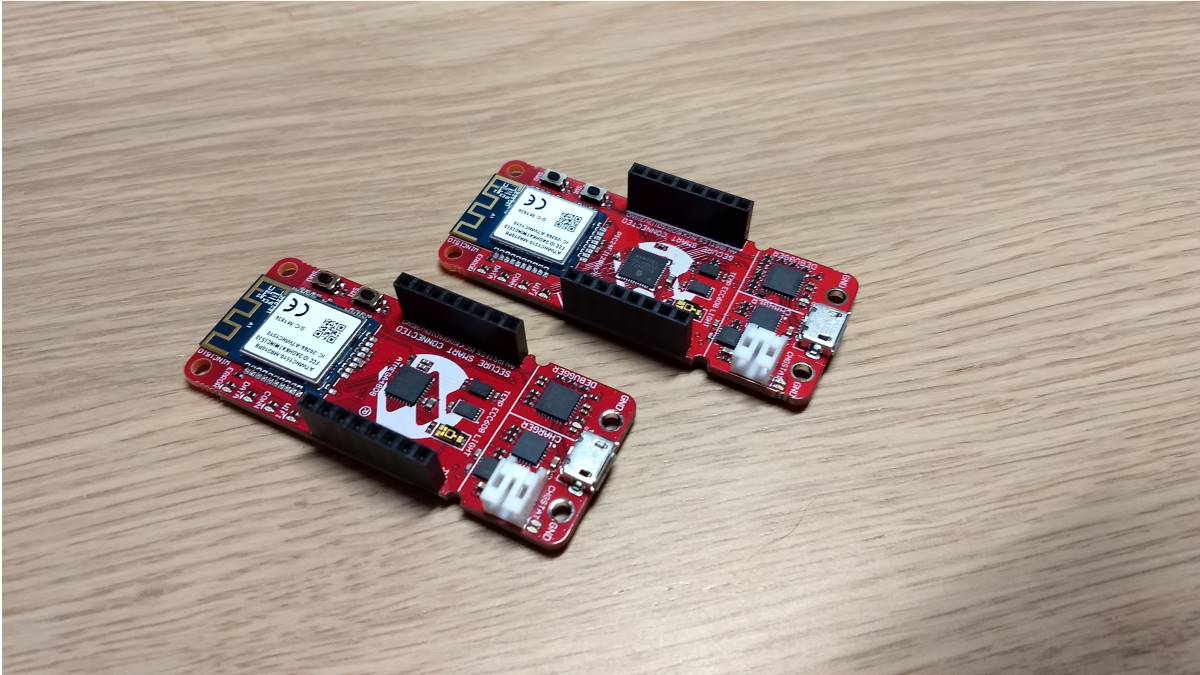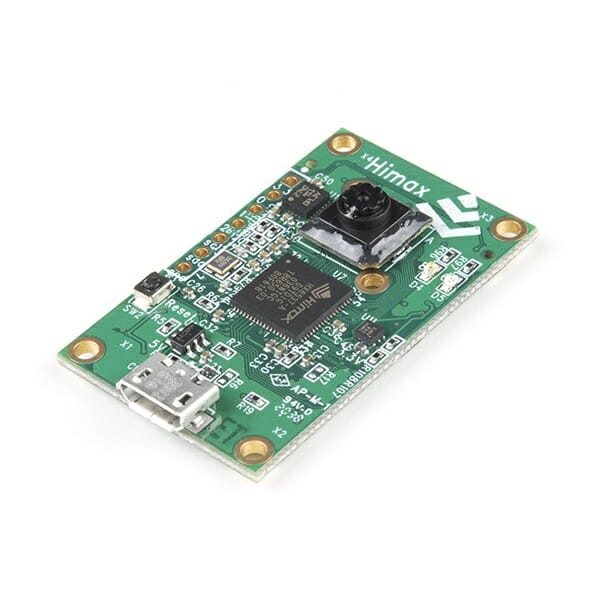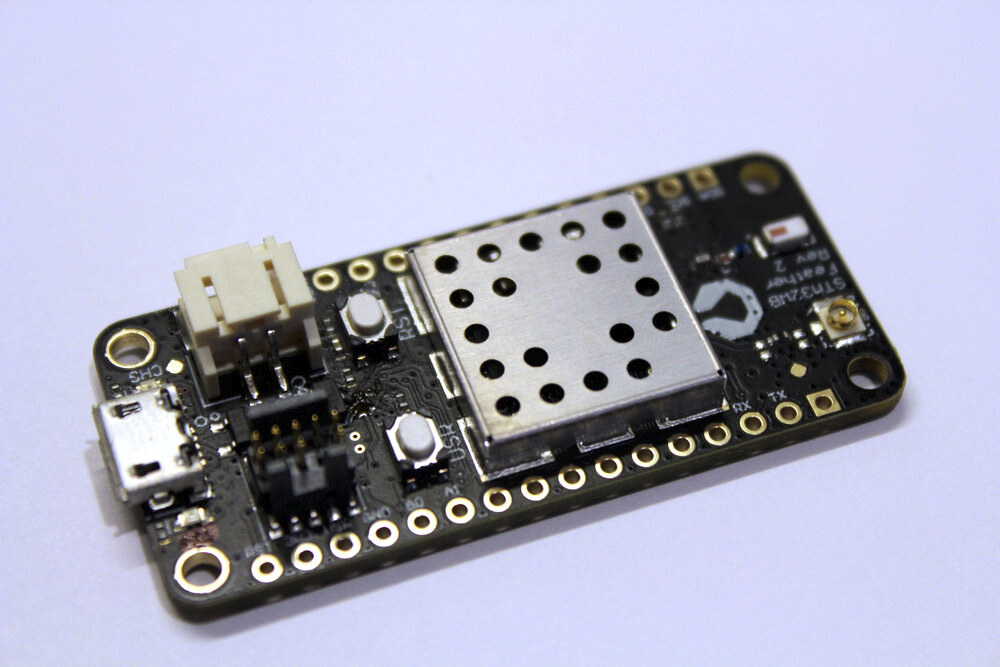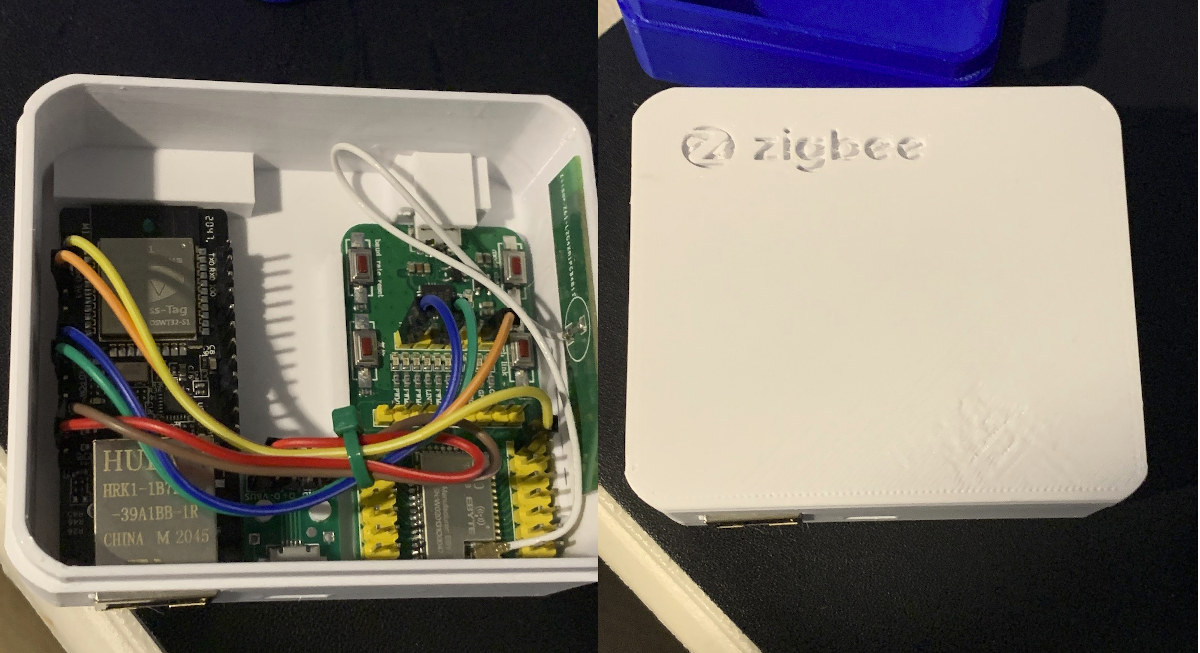Just a few days ago, we mentioned STMicro launched STM32WB5MMG wireless module to simplify Bluetooth LE, Zigbee, OpenThread connectivity by allowing 2-layer baseboards for the module. It turns out there’s also such a module from a third-party with namely Midatronics SharkyPro module based on STM32WB55, and the company also launched MKR SharkyPro I & II development boards following Arduino MKR form factor. MKR SharkyPro specifications: Wireless Module – SharkyPro module Wireless MCU – STMicro STM32WB55CG/CE dual-core Arm Cortex-M4 core at 64 MHz (application processor) and Arm Cortex-M0+ core at 32 MHz (network processor) with 512KB flash, 256KB SRAM Connectivity – Bluetooth 5.0 LE, Bluetooth Mesh 1.0, OpenThread, Zigbee, and other IEEE 802.15.4 proprietary protocols Antenna – Onboard chip antenna (SharkyPro I) or SMA antenna connector (SharkyPro I) Power 3.3V supply voltage Consumption – 13 nA in shutdown mode, 600 nA in Standby mode + RTC + 32 KB RAM Dimensions […]
Sipeed MAIX-II Dock is an Allwinner V831 powered AIoT vision devkit
Sipeed introduced MAIX development boards powered by Kendryte K210 dual-core RISCV processor with AI accelerators in 2018, and we tested the Maixduino and Grove AI HAT based on the solution using Arduino and Micropython the following year. It works fine for audio and video project requiring AI acceleration at low power, but performance (resolution/fps) is limited. So if you’d like a bit more oomph for your audio & vision AI projects, as well as proper Linux support, Sipeed has just launched MAIX-II Dock powered by Allwinner V831 Cortex-A7 AI camera SoC clocked at up to 800-1000 MHz and 64MB on-chip DDR2 RAM, as well as a Full HD camera and a small display.MAIX-II Dock specifications: MAIX-II core module SoC – Allwinner V831 single-core Cortex-A7 processor clocked at 800-1000 MHz with 0.2TOPS AI accelerator, H.264/H.265/JPEG video encoder up to 1080p30 System Memory – 64MB DDR2 in package (SiP) Storage – Optional […]
Rock Pi X Review – An Atom x5 SBC running Windows 10 or Ubuntu 20.04
The ROCK Pi X is the first x86 SBC (single board computer) from Radxa and resulted from repeated enquiries about running Windows on their earlier ROCK Pi 4. The ROCK Pi X comes in two models (Model A and Model B) with each model having either 1GB, 2GB, or 4GB of RAM and either 16GB, 32GB, 64GB, or 128GB of eMMC storage. Additionally, the Model B includes WiFi and Bluetooth together with supporting Power over Ethernet (PoE) although this requires an additional HAT. Both Seeed Studio and Radxa provided samples and in this review, I’ll cover some performance metrics from both Windows and Ubuntu and also discuss the thermals. Rock Pi X Hardware Overview The ROCK Pi X is similar in size to a Raspberry Pi board… but with slightly different ports and port locations even when compared to the Raspberry Pi 4. It is physically slightly larger than its […]
IoT development board comes with AVR or PIC MCU, WiFi module
Microchip AVR-IoT and PIC-IoT development boards have AVR and PIC MCUs respectively, which enables a simple interface between embedded applications and the cloud. The IoT development boards can securely transfer data to Amazon Web Services (AWS) IoT platform with a WiFi connection. The IoT development boards also include an onboard debugger which can be used to program and debug the MCUs without any need for external hardware. The IoT development boards also have an integrated lithium battery charger, which makes it a rechargeable device and allows easier deployment for a “ready-to-go solution.” The AVR-IoT WA development board integrates the ATECC608A CryptoAuthentication chip for security protocols and the ATWINC1510 Wi-Fi network controller for connectivity. The development board combines the ATmega4808 MCU 8-bit AVR MCU running at up to 20 MHz and offers a wide range of flash sizes up to 48 KB. The unit uses a “flexible and low-power architecture, including […]
LG launches LG8111 AI SoC and development board for Edge AI processing
LG Electronics has designed LG8111 AI SoC for on-device AI inference and introduced the Eris Reference Board based on the processor. The chip supports hardware processing in artificial intelligence functions such as video, voice, and control intelligence. LG8111 AI development board is capable of implementing neural networks for deep learning specific algorithms due to its integrated “LG-Specific AI Processor.” Also, the low power and the low latency feature of the chip enhances its self-learning capacity. This enables the products with LG8111 AI chip to implement “On-Device AI.” Components and Features of the LG8111 AI SoC LG Neural engine, the AI accelerator has an extensive architecture for “On-Device” Inference/Leaning with its support on TensorFlow, TensorFlow Lite, and Caffe. The CPU of the board comes with four Arm Cortex A53 cores clocked at 1.0 GHz, with an L1 cache size of 32KB and an L2 cache size of 1MB. The CPU also […]
Himax WE-I Plus EVB AI development board supports TFLite for microcontrollers
Himax WE-I Plus EVB is a low-power AI development board focused on machine learning and deep learning applications with its support for the TensorFlow Lite framework for Microcontrollers. It consists of majorly two significant components. First, HX6537-A ASIC is an ultra-low-power microcontroller designed for battery-powered TinyML applications. Second, HM0360 VGA mono camera with ultra-low power and CMOS image sensing features for CV(Computer Vision) based applications like object classification and recognition. The All in One AI Development Board The Development Board consists of HX6537-A ASIC, with built-in ARC EM9D DSP working at 400MHz frequency. It contains internal 2MB ultra-low leakage SRAMs for system and program usage. It also contains two LEDs to display classification results. Connections with external sensors/devices can be established using I2C and GPIOs interface present in its expansion header. “The all-in-one WE-I Plus EVB includes an AI processor, HM0360 AoS VGA camera, 2 microphones, and a 3-axis accelerometer […]
STM32WB Feather board features STM32WB55 Bluetooth 5.0 SoC
STMicro announced the availability of their first wireless STM32 MCU last year with STM32WB55 Bluetooth 5.0 and 802.15.4 Cortex-M4/M0+ microcontroller together with P-NUCLEO-WB55 Development Pack. A company called Reclaimer Labs has now designed a Feather-compatible board with the wireless MCU, more specifically STM32WBCGU6, and simply called STM32WB Feather board. STM32WB Feather Board specifications: Wireless MCU – STMicro STM32WB55CG Bluetooth SoC with Arm Cortex-M4 application core, Arm Cortex-M0+ Bluetooth co-processor, 1 MB Flash storage, 256 KB of SRAM, USB ROM Bootloader Storage – 128 Mbit SPI NOR Flash memory Bluetooth antennas – On-board chip antenna, u.Fl connector for external antenna Expansion – 16-pin + 12-pin unpopulated headers with 6x analog input pins UART, I2C, SPI, and 7x GPIO pins Debugging – Standard SWD debug connector Misc – User button and LED, 32.768 kHz crystal for LSE/RTC Power Supply 5V via micro USB port 2-pin battery header, LiPo battery charger Dimensions – […]
DIY project creates Zigbee to Ethernet bridge with WT32-ETH01
We previously wrote about Ebyte E180-ZG120B-TB an inexpensive ($9.90) Zigbee 3.0 evaluation board based on Silabs EFR32MG1B Arm Cortex-M4 wireless MCU and the equally cheap ($7.78) WT32-ETH01 ESP32 Ethernet board. What do they have in common? Absolutely nothing! But GitHub user tube0013 decided to connect both boards over UART to create a Zigbee to Ethernet DIY coordinator/bridge running open-source firmware. The hardware also includes a Micro USB adapter for power, several 10cm jumper wires, and he/she also designed a 3D printed case. EZSP-Firmware is used for the Ebyte Zigbee 3.0 board, and ESPHome open-source home automation firmware for the ESP32 board. You’ll also need serial to IP code and ESPHome config. Note that flashing firmware to the Ebyte requires a programmer, and the developer used a J-link EDU Mini together with Silicon Labs’ Simplicity Commander. As mentioned above, a 3D printed case has also been designed, so everything is neatly […]



